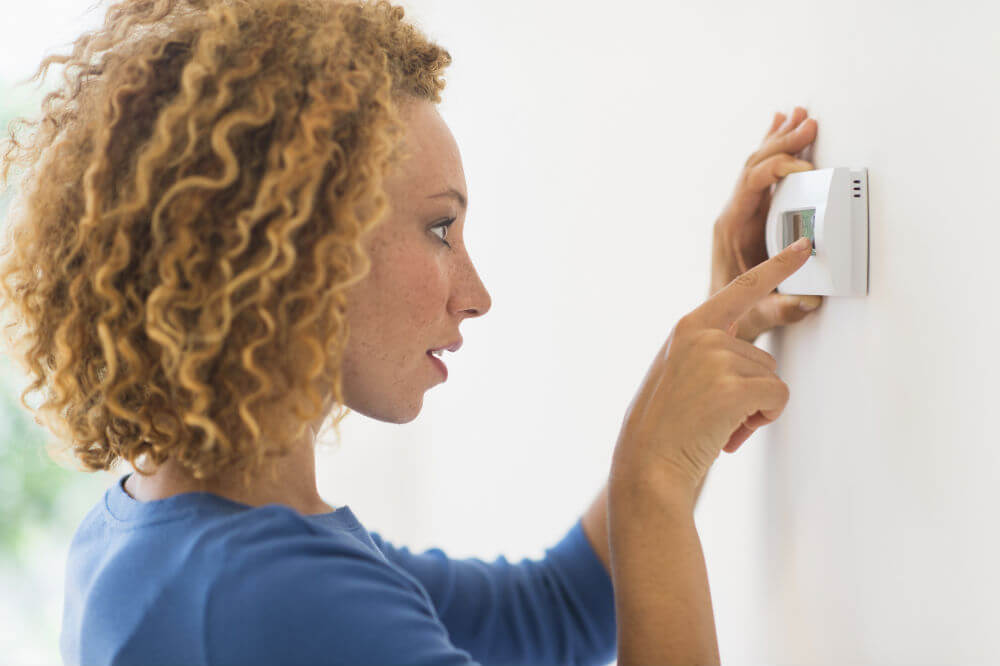Get heat efficient with technology and decor
What you put in your home can help keep the cold out
Advertisement
What you put in your home can help keep the cold out

When you think of home automation most people salivate over the idea of heated driveways (no shovelling!), and wireless speakers synced to bluetooth stereos that play at the push of a button (or better yet, through voice command). Whether you’re an early adopter or a techno-peasant, you can’t deny the exponential growth in the home-automation market over the last decade.
According to ABI Research, a U.S.-based technology analysis firm, the home automation industry will grow 11.5% between 2012 and 2018—becoming a USD$14.1-billion industry worldwide. Initially the advances in this area of home automation came from security companies, but in recent years massive telecom and cable companies have jumped on board. “It’s not a very new market,” explained Adarsh Krishnan, an ABI Research senior analyst, in an interview with Forbes. As a result, home-automation is becoming more and more affordable (unlike heated driveways). Even better: Home-automation can help create a heat efficient home, which will save you money (and resources). So, in our third installment of the Ultimate Heat Efficient Home guide, we introduce technology and home decor options that will help you lower your heating bill and increase the heat efficiency of your home.The ultimate in control is a WiFi enabled, GPS recognizing, digital thermostat. Imagine increasing the temperature in your home, while still driving home from work. Or what about a thermostat that learns your weekly routines and increases the heat about an hour before you wake up—and you don’t have to worry about setting a timer. This is what the Nest—now owned by Google Inc.—and Lyric, a Honeywell WiFi thermostat promise. At just over CDN$300, both products are Andriod and iPhone compatible, and both allow you to reduce your energy bill and increase your heat efficiency by programming optimal temperature times. (The Lyric is also rumoured to be moving towards Zoned Heating technology, something the Nest can’t do, yet.)
But even if you don’t want to fork out the money for the latest thermostat gadget, you can still benefit from manipulating your thermostat. The U.S.-based Department of Energy says that home owners can shave 3% off your energy bill for every degree you lower your thermostat—so a drop from 72 degrees Farenheit (22.2 degrees Celsius) to 68 degrees Farenheit (20 degrees Celsius) can save you 12% off your energy bill. The easiest way to do this is to install a pre-programmable thermostat, but you can get the same results by diligently adjusting the temperature on your thermostat—dropping it when you’re not in the house, or when you go to bed, and increasing it in the morning and evening when the house is bustling with family and activity. According to This Old House expert, John Wagner, you can save as much as 20% off of your heating/cooling bill by using a pre-programmable thermostat and setting the following temperatures at the following times: FOR HEAT 6am to 9am = 68 degrees Farenheit / 20 degrees Celsius 9am to 5:30pm = 60 degrees Farenheit / 15.6 degrees Celsius 5:30pm to 11pm = 68 degrees Farenheit / 20 degrees Celsius 11pm to 6am = 60 degrees Farenheit / 15.6 degrees Celsius FOR AIR CONDITIONING 6am to 9am = 75 degrees Farenheit / 23.9 degrees Celsius 9am to 5:30pm = 80 degrees Farenheit / 26.7 degrees Celsius 5:30pm to 11pm = 75 degrees Farenheit / 23.9 degrees Celsius 11pm to 6am = 80 degrees Farenheit / 26.7 degrees CelsiusWant to read the first installment in the Ultimate Heat Efficient Home guide? Go here.
Want to read the second installment in the Ultimate Heat Efficient Home guide? Go here.
Read more from Romana King at Home Owner on Facebook »Want more tips on heat and energy efficiency?
Go to: Home Maintenance Checklist-Winter Go to: The home energy makeover Go to: Energy upgrade savings Go to: Ultimate Home Maintenance Guide
Share this article Share on Facebook Share on Twitter Share on Linkedin Share on Reddit Share on Email